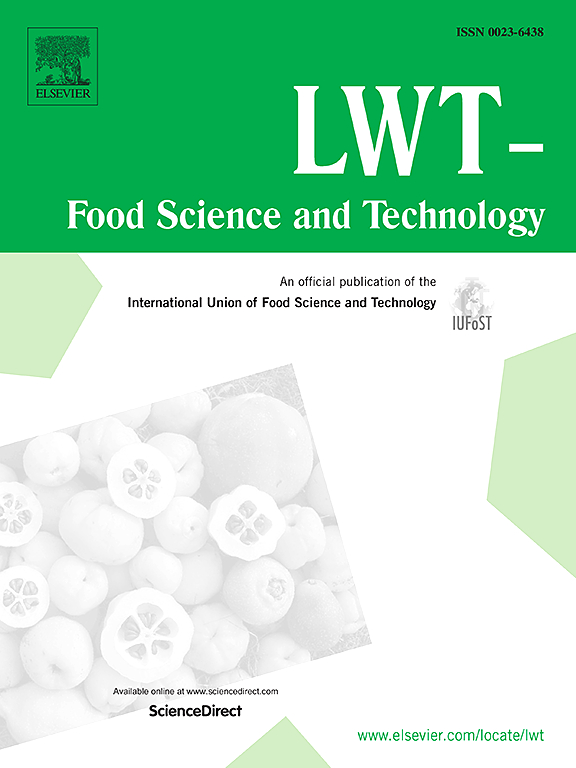Characterisation of fresh-like orange juice prepared by ultrasound treatment followed by high-pressure processing under industrial setting
IF 6
1区 农林科学
Q1 FOOD SCIENCE & TECHNOLOGY
引用次数: 0
Abstract
The rising demand for minimally processed nutritious food has led to advancements in non-thermal food processing technologies. This study evaluated the effects of combined ultrasound (US) and high-pressure processing (HPP) on the quality of Navel orange juice. Fresh juice was treated with US at 40 W/mL (K1), HPP at 450 MPa for 3 min (CP), or both US and HPP (UH). This study found that none of the treatments significantly altered the pH, total soluble solids, colour attributes, or total phenolic content compared to the untreated control (K0). HPP effectively eliminated microorganisms, reducing microbial counts below detection limits. US showed greater effectiveness than HPP in deactivating pectin methylesterase (PME) and maintaining cloud stability for up to 7 days at 4 °C. PME activity decreased from 6.5 × 10−4 unit/mL in K0 to 4.6 × 10−4 unit/mL with US, 5.3 × 10−4 unit/mL with HPP, and 3.8 × 10−4 unit/mL with the combined treatment, extending cloud stability to 14 days. Sensory evaluations indicated that US-HPP-treated juice was rated significantly better than CP and K0 samples. However, both treatments increased polyphenol oxidase and peroxidase activities by 22 % and 17 %, respectively. Further research is needed to optimize conditions to reduce these browning enzymes while preserving freshness.
在工业环境下用超声波处理后再用高压处理制备的鲜样橙汁的特性
对最低限度加工的营养食品的需求不断增长,导致了非热食品加工技术的进步。本研究评价了超声和高压联合处理对脐橙汁品质的影响。新鲜果汁用40 W/mL的US (K1), 450 MPa的HPP (CP)处理3分钟,或者用US和HPP (UH)处理。该研究发现,与未经处理的对照(K0)相比,没有任何处理显著改变pH值、总可溶性固结物、颜色属性或总酚含量。HPP有效地消除了微生物,将微生物数量降低到检测限度以下。在4°C条件下,US比HPP在失活果胶甲基酯酶(PME)和维持云稳定性长达7天方面表现出更大的效果。PME活性从K0处理下的6.5 × 10−4单位/mL降至US处理下的4.6 × 10−4单位/mL, HPP处理下的5.3 × 10−4单位/mL,联合处理下的3.8 × 10−4单位/mL,云稳定性延长至14天。感官评价表明,us - hpp处理过的果汁明显优于CP和K0样品。然而,两种处理分别使多酚氧化酶和过氧化物酶活性提高了22%和17%。需要进一步的研究来优化条件,以减少这些褐变酶,同时保持新鲜度。
本文章由计算机程序翻译,如有差异,请以英文原文为准。
求助全文
约1分钟内获得全文
求助全文
来源期刊

LWT - Food Science and Technology
工程技术-食品科技
CiteScore
11.80
自引率
6.70%
发文量
1724
审稿时长
65 days
期刊介绍:
LWT - Food Science and Technology is an international journal that publishes innovative papers in the fields of food chemistry, biochemistry, microbiology, technology and nutrition. The work described should be innovative either in the approach or in the methods used. The significance of the results either for the science community or for the food industry must also be specified. Contributions written in English are welcomed in the form of review articles, short reviews, research papers, and research notes. Papers featuring animal trials and cell cultures are outside the scope of the journal and will not be considered for publication.
 求助内容:
求助内容: 应助结果提醒方式:
应助结果提醒方式:


